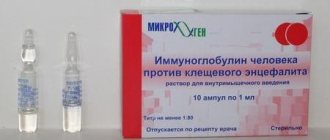Chemical poison vapors spread most actively in confined spaces, with poorly adjusted ventilation and air conditioning systems. This means that poisoning with mercury vapor from a thermometer occurs instantly if the consequences of damage to the glass casing in apartments and private houses are not promptly eliminated.
Characteristics of mercury
Mercury is one of the heaviest and most dangerous metals. The substance is a silvery liquid, the vapors of which have a high degree of toxicity.
Metallic mercury, the kind found in a thermometer, is not as toxic as its liquid counterpart, but it is quite capable of causing poisoning and causing subsequent health problems.
Conventional thermometers contain about 2 grams of mercury; if it enters the human body in full, this dose is considered fatal. But here everything is individual; the occurrence of poisoning depends on:
- body weight;
- age;
- gender;
- room size;
- duration of contact with mercury.
Those most vulnerable to mercury exposure are children under 18 years of age, people over 65 years of age, and pregnant women. Mercury vapor has the most negative impact on them.
The risk of poisoning increases due to a broken thermometer in a small room. This also happens if the room is very hot or the heaters are on.
Mercury balls
If a thermometer was broken in a room and no measures were taken to eliminate mercury, then the possibility of poisoning is close to 100% due to its high concentration and toxicity.
Mercury vapor from a thermometer: consequences
There are often cases when people try to eliminate a damaged thermometer on their own and the consequences of mercury poisoning from a thermometer are not immediately noticed. The substance can evaporate for years (up to 30 years!) in a closed room. Poisonous metal settles on porous surfaces and can be found in the cracks of parquet boards and under baseboards. Mercury from a thermometer may not immediately provoke symptoms of poisoning. It will take several years to identify chronic diseases caused by inhalation of harmful fumes. The symptoms of a broken thermometer are often confused with temporary illness. However, negligence towards a substance of the first hazard class is not allowed.
Ways mercury enters the body
Mercury, depending on its concentration, enters the human body in various ways. If the concentration of mercury in the air does not exceed 25 mg/m3, then the metal enters the body through breathing and gradually accumulates in the lung tissue. If the concentration is higher, then you can not only inhale toxic metal, since penetration occurs even through uninjured skin.
When mercury hits the mucous membranes directly, it has a major effect on the liver. The most dangerous consequences occur when the metal enters directly into the bloodstream or through inhalation of vapors. In this case, the liver does not participate in the neutralization of substances that are so dangerous to humans.
Is it possible to be poisoned by mercury from a broken thermometer after a few years?
The mechanism of the toxic effect of poison on the human body can be divided into two stages. Primary toxicity occurs just a few hours after exposure to fumes. The secondary effects of mercury poisoning from a thermometer can last for many years. This is mainly due to incorrect technology for eliminating metal released into the atmosphere. You can often notice elements of a damaged thermometer in hard-to-reach places. The balls can roll into cracks and baseboards, get into the pile of carpets and even into the plumbing system. That is why it is possible to avoid mercury poisoning from a thermometer only with the correct approach to neutralizing fumes.
Signs of mercury poisoning
If you accidentally break a thermometer, you will most likely get poisoned. Poisoning can occur acutely, subacutely and chronically. Each of these processes has its own characteristics that everyone needs to know.
Acute form of poisoning
This type of poisoning is rare and most often occurs after large-scale industrial accidents. Symptoms appear within a few hours.
Expressed as follows:
- unreasonable weakness;
- headache;
- poor appetite or its complete absence;
- noticeable pain when swallowing;
- metallic taste in the mouth;
- nausea;
- change in gum color;
- a sharp increase in temperature to 38-39 degrees;
- chest pain and chills;
- severe abdominal pain;
- diarrhea with bloody discharge.
Adults and children have the same signs of mercury poisoning. The only difference is that, due to physiological reasons, they appear somewhat faster in children; it is difficult for the body of a poisoned child to cope with this condition and he requires immediate assistance from medical workers, since the most likely outcome is death.
Subacute form of poisoning
The subacute form is very similar to the acute form, their symptoms are also similar, but also adds:
- mercury stomatitis;
- signs of kidney damage;
- bleeding
Pneumonia and pulmonary edema may also develop. Often, both the gastrointestinal tract and the nervous system are affected.
Chronic form of the disease
Drowsiness
This form occurs when a small amount of mercury vapor is periodically ingested for a long time. Typically, poisoning occurs after 2-5 months, depending on the concentration of the metal and the general condition of the body.
Symptoms of the chronic form:
- high fatigue;
- constant drowsiness;
- general weakness;
- constant dizziness;
- emotional disorders, which are characterized by self-doubt, irritability, and sudden mood swings.
Frequent signs of the chronic form are decreased attention and memory impairment. There is a frequent urge to urinate, skin sensitivity worsens, and vision decreases. Most often, the thyroid gland greatly increases in size and the heart rhythm becomes disrupted.
A chronic disease can occur after 5-10 years of constant contact with mercury.
Is it possible to get poisoned by mercury from a thermometer if it is removed?
Many people decide to independently eliminate the elements of the damaged thermometer and the toxic metal itself. Particles from the glass case do not pose a danger to humans, but mercury entering the body can seriously worsen health.
If a thermometer breaks, many people are not afraid of mercury poisoning and clean the floor with ordinary household cleaning products. However, the poison of the first class of danger does not cease to actively evaporate, and wet cleaning helps the substance spread throughout the entire perimeter of the apartment.
According to established SanPin standards, mercury can be removed only by professional demercurization (neutralization of the effect of the substance). The process is the purification of air from harmful concentrations of metal vapors. Specialists use gas analyzers that can identify areas of poison spread with extreme accuracy. Control measurements are carried out to confirm the quality of the demercurization work carried out.
What actions should be taken in case of mercury poisoning
In case of mercury poisoning, you should immediately consult a doctor who will prescribe treatment, but before that you need to take some measures.
First, you need to leave the room in which the thermometer was broken. Go out into the fresh air, drink water.
Now you need to rinse all mucous membranes, namely the eyes, mouth, nose. After this, wash all exposed skin; you can use a non-concentrated solution of ordinary potassium permanganate. This should not be done if you notice disturbances in the functioning of the respiratory or cardiovascular system. If violations are noticed, then it is necessary to eliminate the threat to life and carry out cardiopulmonary resuscitation, relief, or stop the bleeding.
Gastric lavage using a tube
After going to the hospital, periodic gastric lavage with a tube will most likely be prescribed. This is done several times during the day; this action weakens the effect of the metal on the internal organs.
An antidote is injected intravenously or intramuscularly, which washes out toxic compounds from the blood.
Where can a person encounter mercury in everyday life?
Despite this danger of the metal, it is not so easy to come across mercury, especially in such quantities as to cause serious pathologies.
Mercury is used in the energy sector in the production of mercury-voltaic batteries, in metallurgy for the production of various alloys, in the processing of secondary aluminum, in the chemical industry as reagents, in agriculture for pesticide dressing - in this case, mercury poisoning is possible during the professional activities of people in certain professions .
- Previously, silver amalgam was used in dentistry, but with the invention of photographic materials, this filling material was no longer used. One filling contains up to several hundred mg of metal.
- Mercury vapor is found inside fluorescent lamps because... the vapors glow in a glow discharge. Mercury content: 1-70 mg.
- In medicine, metallic mercury is used as a thermometer filler because it has high thermal conductivity, does not wet glass, and measurements are very accurate (up to 0.01°C). The thermometer contains up to 2 grams of mercury.
- Elemental mercury, as well as mercury compounds, can accumulate in seafood, hundreds of times higher than the metal content in water. Moreover, technological processing of seafood does not reduce the mercury content in the product.
Thus, in order to be poisoned by mercury, you still need to look for it! This is what some inquisitive people do, bringing home or into the garage unknown devices or devices that can be a source of dangerous mercury vapor.
Sometimes, extremely rarely, chronic mercury poisoning is found in people who once upon a time bought a secondary home, in the cracks of the floors and walls of which there was mercury that inexplicably got there.
In all this, you should be especially vigilant - if a “domestic disaster” has occurred - a thermometer or mercury lamp has broken (see detailed instructions - what to do if a mercury thermometer breaks at home), you should perform a number of simple steps that will protect you, your loved ones and pets from mercury poisoning.
Diagnosis of poisoning
You can accurately determine whether there is poisoning using a number of special medical tests:
- Perform a free hemoglobin test. In case of poisoning, its level becomes significantly lower than the established norm, the same happens with red blood cells and leukocytes.
- It is necessary to do a test for the concentration of mercury in the blood; symptoms appear if the blood contains more than 500 ng/ml.
- A urine test will help detect poisoning within a few days; poisoning occurs when the mercury content exceeds 600 ng/ml.
Reader Questions
This section will discuss the most popular questions from Internet users. All answers are given based on the opinions of experts.
How to detect excess concentrations of mercury vapor in a room?
An express method has been created that involves the use of test strips. You can purchase them through websites; they are quite rare in regular pharmacies. The procedure for using the analyzer is as follows:
- open the package;
- remove one sealed test strip;
- cut the bag and pull out the leaf according to the instructions;
- place in the tested room;
- note the time when the indicator changed color, compare the results with the attached table.
All manipulations must be performed in compliance with safety rules; you must wear special clothing and a respirator.
How much mercury is needed for poisoning?
All data was established by the Ministry of Health and recorded in a number of sanitary and epidemiological requirements. According to documents, acute mercury poisoning occurs at a vapor concentration of 0.13-0.80 mg/m3. Fatal outcome is possible if 2.5 g is inhaled. For the chronic form of the disease, data range from 0.001 to 0.005 mg/m3.
How long does it take for mercury poisoning to appear?
As mentioned above, it all depends on the amount of the substance and the condition of the victim’s body. Usually, in acute cases, the first complaints arrive within 2-3 hours. If we are talking about chronic poisoning, then the clinical picture takes two months or more to form.
How to dispose of collected mercury from a broken thermometer?
For all questions regarding metal disposal, you must contact the regional Ministry of Emergency Situations. It is prohibited to pour the substance into the sink or throw it away with other garbage. You can deliver the mercury yourself, carefully collect it in its entirety in a plastic bag, pour a chlorine-containing agent into it and place it in several more bags. In the absence of chlorine, the element can be collected in water and also tightly packed.
If a person is afraid that mercury particles are still present in his apartment, he can call specialists from the environmental service to measure and treat the room.
Daria Shirochina
Practitioner. She graduated with honors from Vitebsk State Medical University in 2012 with a degree in general medicine. She was awarded a certificate of honor for her achievements in her work.
Consequences of mercury poisoning
If you do not provide timely treatment for mercury poisoning, then negative consequences for a person will certainly arise.
Here are the most serious of them:
- In case of severe poisoning, the lack of timely treatment leads to death.
- People with a chronic form of poisoning gradually become psychologically disabled and cannot live a full life in a normal society.
- If a pregnant woman is poisoned, this can lead to the development of pathologies in the fetus and even its death.
Symptoms of poisoning
Mercury poisoning can occur in severe forms, for example, by inhaling fumes, subacute and chronic, when there is little exposure but over a long period.
The acute form of poisoning is rare. As a rule, severe cases occur as a result of accidents at enterprises where mercury is used or in other similar situations. Patients are usually diagnosed with chronic metal poisoning obtained from a thermometer. Such symptoms do not develop immediately, but gradually.
Symptoms:
- The unequal system suffers. The development of asthenic syndrome (weakness, pain, nervousness, drowsiness, memory problems) is observed. Mercury tremor of the hands, tongue, and less often the entire body also develops. Convulsions may occur. Temperature rises, blood pressure drops, and excessive sweating occurs. The acute form is characterized by retardation of movements and loss of consciousness, falling into a coma.
- Mercury affects the digestive organs. The patient suffers from nausea and diarrhea. Patients often complain of a metallic taste. Mercury affects the mucous membranes, which leads to gingivitis and stomatitis. All this leads to severe salivation and bleeding in the mouth. Sometimes ulcers develop in the organs of the digestive system, and severe pain appears. After exposure to mercury from a thermometer, red gums are observed, after which a dark coating appears on them.
- Liquid metal affects the respiratory system. Poisoning leads to the development of an acute form of non-infectious bronchitis and pneumonia. With severe exposure to the respiratory tract, bleeding is observed. With a large dose of toxins, pulmonary edema is possible.
- With minor but long-term poisoning, mercury accumulates in the organs of the excretory system (liver, kidneys). That is why symptoms of liver and kidney failure are observed in the chronic form. They are also characterized by slow development. The acute form of poisoning is life-threatening.
In each case, the signs will depend on different factors. The best confirmation of mercury vapor poisoning is a blood test for toxins.
What to do if the thermometer is broken?
Potassium permanganate solution in a jar
Instructions for recommended behavior if a thermometer is broken in the room:
- Remove all people and animals from the premises.
- Make a solution of potassium permanganate and pour it into a glass jar with a lid that tightly closes the vessel.
- It is necessary to wear rubberized gloves and a gauze or medical mask to avoid inhaling mercury vapor.
- Using sheets of paper, tape and adhesive tape, collect the mercury balls without touching them with your hands and collect them in a paper envelope.
- Treat the surface with the prepared solution.
- Place the mercury in a paper envelope in a jar and call the Ministry of Emergency Situations for advice on what to do with this vessel.
- After cleaning, check again for the absence of mercury beads; if you are absolutely sure that there are none, then be sure to thoroughly ventilate the room.
Many people broke thermometers in the house. If you break a thermometer, you should not throw the thermometer and mercury down the drain, use detergents when cleaning, touch mercury with exposed skin, wash and then use clothes in which you came into contact with mercury.
Prevention
The main recommendation is to avoid contact with dangerous substances if possible. But this may not always be the case, especially for those people who work in the chemical industry and metallurgy. A few rules that will reduce the risk of poisoning to a minimum:
- Handle household thermometers and fluorescent lamps carefully. It sounds trivial, but most mercury poisoning occurs due to mercury damage;
- If a device containing mercury is broken, the metal should be removed as quickly as possible. The room is wet cleaned, mercury balls are placed in a hermetically sealed container with water. It is strictly forbidden to remove mercury with a vacuum cleaner! The best option is to contact the SES and call a demercurization specialist.
- If you come into contact with mercury, rinse your mouth with potassium chlorate. People working with toxic substances are recommended to do this daily at the end of their work shift.
Video from YouTube on the topic of the article:
How is mercury removed from the human body?
Mercury can be eliminated from the human body naturally, but if too much is taken in, the process is ineffective and accumulation exceeds elimination. Selenium enhances the excretion of toxic metal, so paradoxical cases arise - for example, tuna contains large doses of mercury and selenium, so poisoning with it is unlikely.
In case of poisoning, drugs containing sulfur are prescribed - Unithiol, Succimer, Taurine, Methionine.
Taking them without a doctor's prescription is dangerous - this can lead to poisoning with drugs used to remove mercury. Nonspecific methods of elimination (gastric lavage, forced diuresis) and hemodialysis are ineffective.
Time to remove mercury from the human body
The time it takes to remove mercury from the human body depends on the amount of mercury entering the body. In case of acute poisoning, it can be limited to a few days, and in case of prolonged contact and chronic poisoning, it can last for many months or years. The elimination process should always be completed, i.e. the moment when tests show that there is no mercury left in the body. The participation of mercury in the life of the body has not been established.
Diagnostics
Doctors can usually diagnose mercury poisoning through a physical examination and blood tests. The specialist will ask about any symptoms as well as your general diet.
Questions are asked about the environment in which the person lives or works, including whether the patient lives near any factories or works in an industrial plant.
If a doctor suspects mercury poisoning, a blood test can measure the level of mercury in the body.
Living in a safe space
Why expose yourself and your loved ones to unnecessary risk? Today we are surrounded by many harmful substances with which the modern world is saturated. There are safe electronic thermometers that accurately and quickly indicate body temperature .
The thermometer looks like a flat stick with a thin tip and a display on the body. He gives evidence within a minute after contact with the body. It will not break, is reliable and accurate. Duration of work: from 2 to 5 years. So mercury thermometers have already exhausted their usefulness and will soon disappear completely.
Therefore, when making a choice at a pharmacy, buying drugs or medical devices, read the instructions and inquire about their safety. And stop buying a mercury thermometer . Take care of your health and the health of your loved ones and do not expose yourself to unnecessary risks.
Danger of a damaged mercury thermometer
If you handle a mercury thermometer correctly and carefully, if you store it in a place protected from children, in a special case, and use it only under adult supervision, such an instrument is not dangerous.
But in the case when a thermometer with mercury does break, both glass fragments and leaking mercury from the glass tube pose a danger to the human body. This substance is characterized by a very low melting point, which is not typical for other metals - 38.8°C, and it evaporates already at a temperature of +18°C.
It must be remembered that mercury evaporates both in the open air and under water.
Liquid mercury vapors are very toxic, since when inhaled, the vapors enter the lungs, then the mercury is oxidized and, in its oxidized state, negatively affects the condition of the body. The ions of the element, which are formed during the oxidation of the metal, are very poisonous.
Treatment
Treatment involves eliminating any exposure to the metal and limiting sources of exposure.
If mercury poisoning is related to work or environmental exposure, doctors may suggest changing locations to reduce exposure to mercury vapor or implementing new workplace safety measures.
Mercury poisoning can cause some long-term side effects that are considered individually.
Certain types of severe cases of mercury poisoning may require chelation therapy. This is the process of removing mercury from the organs.
The drugs used in chelation therapy bind to heavy metals in the bloodstream and then remove the mercury through the urine. Chelation therapy has its own risks and side effects, so it is extremely important to use the medication only when needed.
Features of a mercury thermometer
In home and even hospital settings, mercury thermometers are widely used, since they give an error of only 0.01°C. This error is achieved due to the amazing properties of the liquid metal - mercury.
The characteristics of mercury are quite remarkable. The melting point of this chemical is only 38.8°C, which means that under normal conditions it is in liquid form. Like all metals, mercury in a thermometer expands when the temperature rises, and contracts when the temperature drops.
Also, liquid mercury does not have the ability to moisturize and remain on the glass from which thermometers are made. This makes it possible to achieve high precision measuring instruments by using glass tubes with a very small cross-section.
It is important to remember that mercury is nothing more than a highly toxic poison and belongs to the 1st class of very toxic substances.
The above properties make this metal indispensable in the manufacture of thermometers. However, mercury and any compounds with it are quite toxic and poisonous. Because of this reason, some countries have even abandoned the use of mercury-based thermometers.
Treatment of mercury intoxication
If signs of acute mercury poisoning are observed, breathing or heart rhythm problems occur, you must call an ambulance. Treatment begins with the administration of the drug Unithiol, which is a powerful and proven mercury antidote. The course of treatment is 3-4 days. If necessary, it is repeated after 1-2 months.
Taking medications from various groups helps remove dangerous compounds:
- Diuretics (Veroshpiron, Furosemide).
- Sorbents for cleansing the intestinal tract (Enterosgel, Enterol).
- Preparations containing enzymes that coat the walls of the affected esophagus and stomach (Omez, Diaprazole).
If first aid for mercury poisoning does not bring positive dynamics, hemodialysis is performed - a complex procedure for purifying the blood using a special device. Sometimes blood transfusions and surgery are recommended for internal bleeding in the intestines.











